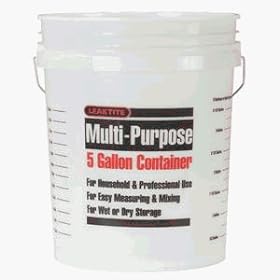haighter
Active Member
Hello. In preparation for my second bottling, I thought I'd ask some questions that I couldn't find in the archives. I recently bottled my first batch using an auto siphon and bottle filler. They seem like nifty contraptions, but the instructions that came with them were pretty ambiguous. It should be noted that no one was around my house on bottling day so I did this all solo, which proved difficult at times.
I read Revvy's thread on bottling (https://www.homebrewtalk.com/f35/revvys-tips-bottler-first-time-otherwise-94812/), and while very informative, it calls upon a different kind of liquid transfer than I am equipped to do. I had the beer in a glass secondary, so I couldn't draw from the spigot as he illustrates.
I did some searches, but haven't seen many posts talk about the bottle-filler tool (long skinny tube with a "button" that dispenses beer once depressed).
First, I had a hard time pumping the autosiphon and pressing the bottle filler at the same time. It took a lot of work to get the siphon going, and I lost of lot of beer all over my kitchen floor. I got maybe 1.5 pumps before it got full of air and wouldn't allow any more pumps. Obviously this was solved by pressing the button down to dispense some of the pent-up air and beer. Am I missing some crucial step here to make this easier and less messy?
Second, the auto siphon was touching the bottom of my carboy and kicking up (previously) settled yeast particulates. There was nothing I could do about this and some of the yeasties (maybe half) found their way into the 40-so bottles I filled. Do you all typically have someone hold the siphon about halfway in the carboy while slowly lowering to avoid yeast kick up? Perhaps someone has invented a nifty strategy to do this process by your lonesome.
Those were my two biggest problems: getting the auto siphon going with the bottle filler attachment affixed and not disturbing a lot of the dead, sunken yeast.
I read Revvy's thread on bottling (https://www.homebrewtalk.com/f35/revvys-tips-bottler-first-time-otherwise-94812/), and while very informative, it calls upon a different kind of liquid transfer than I am equipped to do. I had the beer in a glass secondary, so I couldn't draw from the spigot as he illustrates.
I did some searches, but haven't seen many posts talk about the bottle-filler tool (long skinny tube with a "button" that dispenses beer once depressed).
First, I had a hard time pumping the autosiphon and pressing the bottle filler at the same time. It took a lot of work to get the siphon going, and I lost of lot of beer all over my kitchen floor. I got maybe 1.5 pumps before it got full of air and wouldn't allow any more pumps. Obviously this was solved by pressing the button down to dispense some of the pent-up air and beer. Am I missing some crucial step here to make this easier and less messy?
Second, the auto siphon was touching the bottom of my carboy and kicking up (previously) settled yeast particulates. There was nothing I could do about this and some of the yeasties (maybe half) found their way into the 40-so bottles I filled. Do you all typically have someone hold the siphon about halfway in the carboy while slowly lowering to avoid yeast kick up? Perhaps someone has invented a nifty strategy to do this process by your lonesome.
Those were my two biggest problems: getting the auto siphon going with the bottle filler attachment affixed and not disturbing a lot of the dead, sunken yeast.




